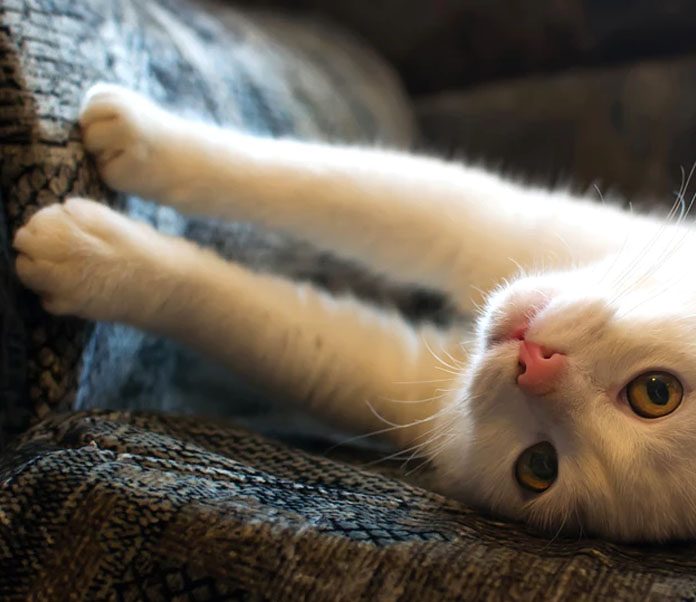Is your feline friend scratching people or damaging furniture with their claws? Should you remove their claws to prevent more destruction? Before considering declawing your cat, it’s important to understand what declawing actually involves, as well as alternate solutions to curb destructive scratching.
Keep reading to learn more about declawing your cat.
Cat scratching is a normal way for your feline friend to communicate, clean and condition their claw beds, and stretch their leg and toe muscles. However, destructive scratching from your lovable kitty can be annoying when they are tearing up your furniture and house. Cat scratching can also be dangerous and harmful when the scratching involves your skin and poses a threat to loved ones. Removing their claws is a solution, but it’s important to explore what declawing a cat actually involves, as well as possible alternative solutions.
What Is Cat Declawing?
Feline declaw surgery is the permanent removal of the nails by amputation of the toe bone up to the first joint. The surgery usually involves only the front feet and has to be performed under general anesthesia. Although this procedure is relatively common, declawing a cat is major orthopedic surgery, and your cat will need special post-surgical care to recover as comfortably and quickly as possible.
Is Cat Declawing Painful?
Your pet should be given an injectable pain reliever after surgery, but their feet will be bandaged overnight. Your veterinarian will also prescribe pain medication and possibly antibiotics for you to give your cat at home.
It’s important to keep your pet as comfortable as possible when they come home from surgery. Some degree of discomfort and soreness is expected, and they may be reluctant to walk around and jump up on things. In younger cats, the pain should lessen within 10 days and limping should improve within a week. For older cats, this time frame is a little longer. However, the recovery time greatly depends on your individual cat and their needs.
Note: Never give your cat, or any pet, human pain medication, including aspirin, acetaminophen, ibuprofen and naproxen. These drugs are toxic to dog and cats, and could cause death if ingested.
Is Declawing the Right Choice for Your Cat?
It’s best to consider permanent removal of the claws only as a last resort when other strategies have been unsuccessful and to avoid surrendering or euthanizing your cat.
However, the decision to declaw your cat is a personal one to be made by you and your family. Consider reaching out to friends and family who have gone through the declawing procedure with their cats, and always consult with your veterinarian to get professional advice.
Tip: Cats who have had their front claws removed should remain as indoor-only cats to avoid injury.
Alternatives to Cat Declawing
Before you consider surgery to remove your cat’s claws, try the following solutions to help discourage destructive behavior. The goal isn’t to stop the scratching, but to redirect it onto the right targets.
- Buy or build scratching posts or pads that have a similar shape, direction and material to your cat’s preferred scratching places. Look for horizontal or vertical direction and materials that allow a good grip, such as woven fabric, carpet, soft wood and sisal rope.
- Position the scratching posts or pads near your pet’s favorite target, resting spot or pathway.
- Make the scratching posts or pads appealing by sprinkling catnip on them, playing with toys on or around them and rewarding your cat with treats after using them.
- Cover inappropriate targets with double-sided tape or use a commercial repellant spray. You might also try using a spray bottle filled with water for an effective yet gentle reminder not to scratch a particular object.
Note: Never hit or physically reprimand your cat for scratching. Scratching is a natural process for your feline pet, and physically disciplining them will just confuse them.
Recommended Products
| Picture | Name | Price | Description |
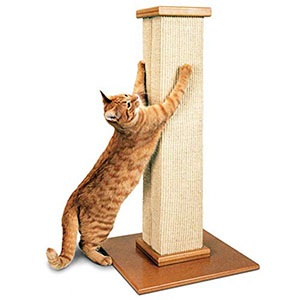 |
Pioneer Pet SmartCat The Ultimate Scratching Post | $41.99 | More |
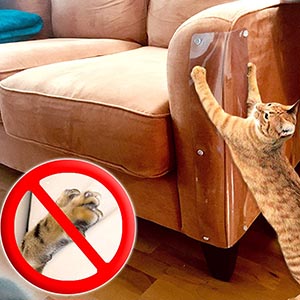 |
LAMINET The Original Deluxe Pet Scratch Shields | $12.49 | More |
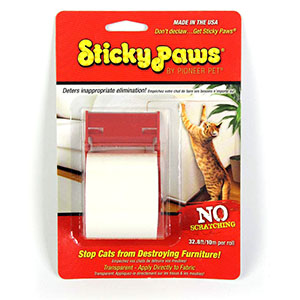 |
Pioneer Pet Sticky Paws on a Roll Cat Deterrent, White, 10m Per Roll | $8.09 | More |
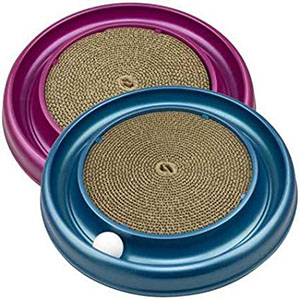 |
Bergan Turboscratcher Cat Toy | $7.87 | More |
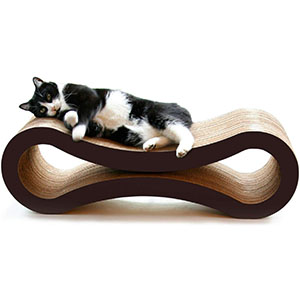 |
PetFusion Ultimate Cat Scratcher Lounge | $49.95 | More |
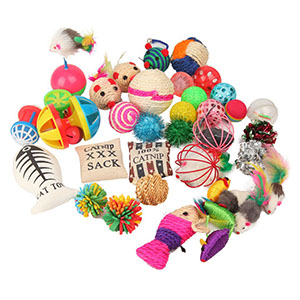 |
Fashion’s Talk Cat Toys Variety Pack for Kitty | More |














